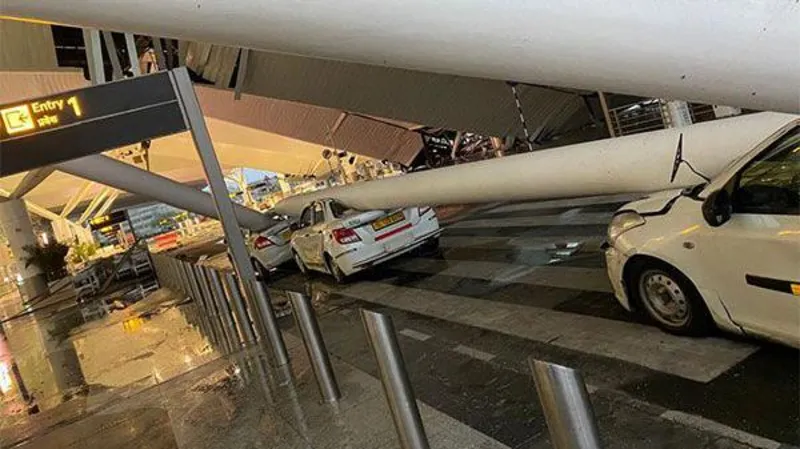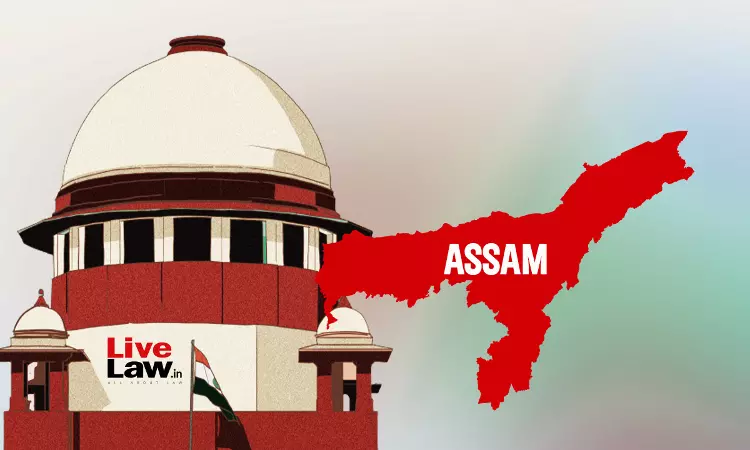In a shocking incident, a portion of the roof at terminal 1 of Delhi’s Indira Gandhi International Airport collapsed early Friday morning, leaving a trail of destruction and chaos in its wake. The incident, which occurred around 5 AM local time, resulted in the death of one person, injuries to eight others, and the suspension of all departures from the terminal.
Videos circulating online show massive pillars from the roof crashing into parked cars near the terminal, with some vehicles completely buried under the debris. The collapse primarily affected the pick-up and drop-off area of Terminal 1, Which had recently undergone extensive renovations costing billions of rupees and was unveiled in March 2024.

The victim has been identified as Ramesh Kumar, a 45-year-old cab driver from Rohini, who was killed instantly when the canopy collapsed on his vehicle. Kumar’s son, Ravinder, was informed about his father’s death hours later, as authorities initially told him that Kumar had fainted.
Among the injured are Santosh Yadav, a 28-year-old driver who narrowly escaped the collapse, and Arvind, a 34-year-old airport employee who suffered head injuries. The injured were rushed to nearby hospitals, including Medanta Hospital, ESI Hospital, and Safdarjung Hospital, for treatment.
Compensation and Investigation
In the aftermath of the incident, Union Civil Aviation Minister Kinjarapu Rammohan Naidu announced a compensation package of Rs 20 lakh for the family of the deceased and Rs 3 lakh each for those who were injured. The Delhi International Airport Limited (DIAL) has formed a Technical Committee to investigate the cause of the collapse and submit a report as soon as possible.
The opposition has criticized the incident, terming it as an example of “extremely substandard infrastructure” at the Delhi airport. However, Larsen and Toubro (L&T) the company responsible for the recent expansion project at Terminal 1, has clarified that the collar[sed structure was built by another company in 2009 and that the incident had no impact on the extended portion constructed by L&T.
Suspension of Flights and Waterlogging
The collapse has led to the suspension of all departures from Terminal 1, with check-in counters remaining non-operational. Arrivals continued at T1 until 10:30 AM, and subsequent flights until 2 PM were canceled before the rest of the day’s flights were reallocated to T2 and T3 terminals.
The incident unfolded amidst heavy rainfall in Delhi, which has brought relief from the scorching heat but has also caused waterlogging in certain areas. The Indian Meteorological Department has predicted continued heavy rainfall throughout the weekend, with the city expected to experience intense downpours.
Coordination and Restoration of Operations
DIAL is coordinating with various authorities, including the Directorate General of Civil Aviation (DGCA), Bureau of Civil Aviation Security (BCAS), Central Industrial Security Force (CISF), Delhi Police, and the National Disaster Response Force (NDRF), to assess the situation and expedite and restoration of operations at Terminal.
A case has been registered under Section 304A (causing death by negligence) and Section 337 (causing hurt by act endangering life or personal safety of others) of the Indian Penal Code in connection with the incident.
As the investigation into the cause of the collapse continues, the focus remains on providing medical assistance to the injured, offering support to the family of the deceased, and restoring normalcy at the airport. The incident serves as a stark reminder of the importance of ensuring robust infrastructure and safety measures at critical public facilities like airports.










